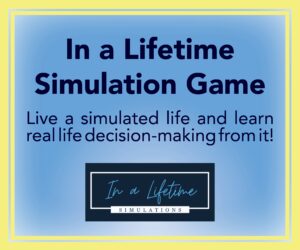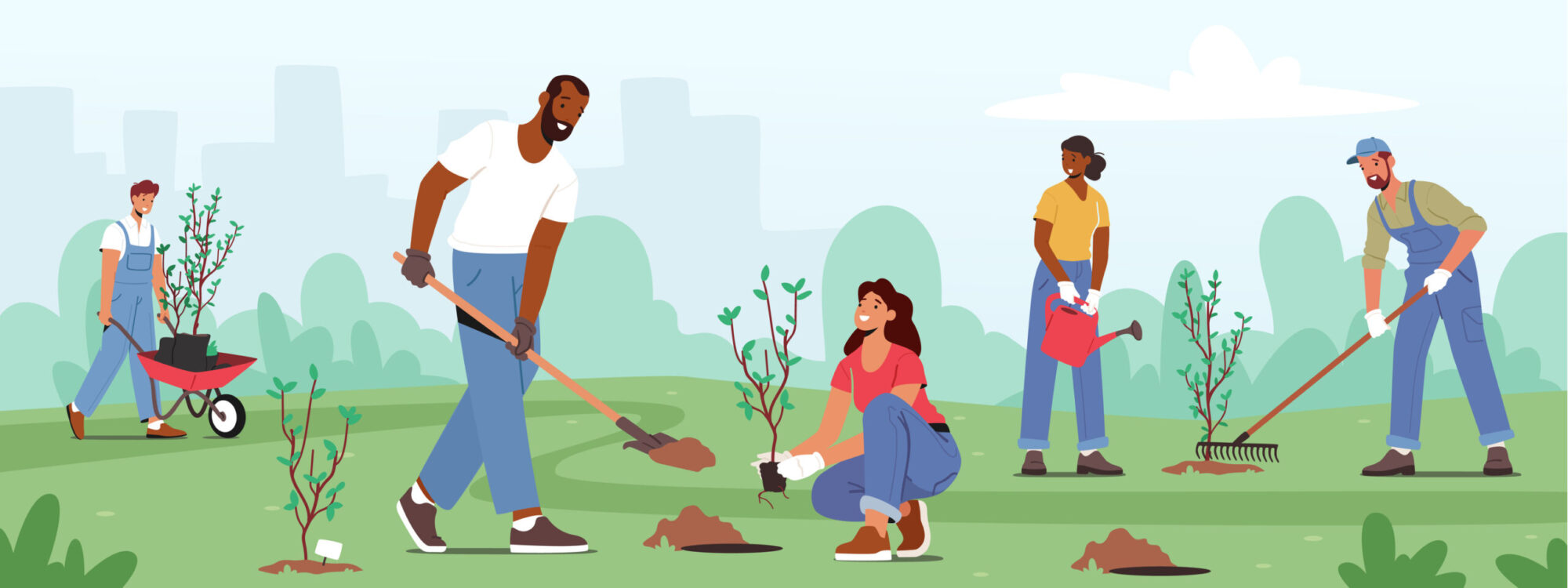In the early months of the COVID-19 pandemic, with fear and the unknown weighing heavily, I wrote an article about taking therapy outdoors as “A Natural Approach to Current Mental Health Challenges” (Family Therapy magazine, July/August 2020). Therapy, which pre-pandemic was almost exclusively provided face to face in offices around the world, was catapulted onto the online platform and clients found themselves seeing their therapists in closets, bathrooms, bedrooms, cars; anywhere they could find some privacy and an internet connection. This rapid revolution has had many benefits, among them increased accessibility, convenience, and affordability.
Research has shown that telehealth is as effective as in-person therapy (Greenwood et al. 2022), but many therapists are tired of working exclusively online. Telehealth has been described by some therapists as “soul crushing, exhausting, and hard on the body.” So, while virtual therapy is here to stay, and continues to grow rapidly, it’s clear that something happens between therapist and client when they are in person and even more so when they are together outside in nature.
What is Ecotherapy?
Ecotherapy is the growing field of interventions that incorporate nature and the more than human world into work that promotes mental, physical, and spiritual health and well-being. It is an umbrella term for modalities including, but not limited to, Animal Assisted Therapy, Horticultural Therapy, Wilderness Therapy, and Nature Informed Therapy.
Why bring it into your practice?
Think for a moment about a time you spent in nature; how did you feel, what did you see, hear, smell, touch? Going outside for therapy sessions allows for an awakening of all the senses and helps bring people into the present moment. It takes them out of their normal environment (many clients do telehealth sessions from the same place they do the majority of their day to day work) and moves them to new places, in their bodies and their minds. People report greater transformation of the problems they are bringing to therapy, they feel better, and they enjoy walking and talking or sitting together in nature. They report feeling more open, relaxed, self aware, energized and reflective. When outside in nature metaphors abound and clients are able to see their problems from new perspectives.
Often being in nature stimulates memories from childhood and being outside, feeling relaxed, nurtured and held by nature, allows people to share about both positive and painful memories with greater ease and comfort.
The movement during sessions helps to loosen the grip of old persistent problems and people are more open to new possibilities. When I work with clients outside they will often say, “Oh, I really need to get out here more often.” An outdoor session reminds them how good it feels to be connected to nature and their regularly scheduled sessions help them reclaim their desire and motivation to spend time outside, exercising, spending time with family and friends or just sitting mindfully in nature. Often being in nature stimulates memories from childhood and being outside, feeling relaxed, nurtured and held by nature, allows people to share about both positive and painful memories with greater ease and comfort. It’s also good for you, the therapist! The Center for Nature Informed Therapy (CNIT) in Towson, MD, and Hood College, in Fredrick, MD are currently spearheading a ground-breaking research project aimed at investigating the potential of Nature Informed Therapy (NIT) to mitigate compassion fatigue among mental health professionals. According to Heidi Schreiber-Pan, founder of CNIT, “this pioneering study involves collecting and analyzing data from mental health practitioners who have integrated nature-based interventions into their therapeutic practices.” Preliminary findings show that therapists who practice nature-informed therapy experience less burnout, and greater work satisfaction than therapists who do all their sessions indoors or online. Schreiber-Pan states, “this research not only holds promise for enhancing the well-being of mental health professionals but also contributes to the growing body of evidence supporting the therapeutic benefits of nature”.

When you take clients outdoors for sessions, Nature becomes your co-therapist and the “tripartite therapeutic partnership” (Hegarty 2010: 66) has an impact on the therapeutic relationship. (Harris, 2018) The sessions flow differently because you have all the elements of nature to engage with and appreciate. Every session is different, the weather, temperature, time of day and year, and things that happen to notice and pay attention to. In the office or online, we find ourselves and our clients in the same place, for weeks, months or even years. And while that provides an important sense of security, safety, containment, and consistency, going to a new place promotes physical movement, and offers constant examples of change, growth and resilience. On an outdoor session in nature you might see chipmunks scurrying, ducks paddling with the flow of a creek, or a turtle slowly sunning itself on a log. In sessions with clients I’ve seen Herons, blossoming flowers, snakes, caterpillars, butterflies, deer, and evidence everywhere of both new life and death. You and your client or clients have the shared experience of hearing birds chirping, the wind in the trees, your footsteps on the solid earth.
 Together you smell the woods, the scent of honeysuckle; you feel the fresh air on your skin. The session comes alive as you engage with and experience all the elements that surround you. Clinicians sometimes wonder or worry about the “distractions” which can actually become opportunities to refocus, deescalate, relax, and breathe when clients become emotionally activated or flooded during a session.
Together you smell the woods, the scent of honeysuckle; you feel the fresh air on your skin. The session comes alive as you engage with and experience all the elements that surround you. Clinicians sometimes wonder or worry about the “distractions” which can actually become opportunities to refocus, deescalate, relax, and breathe when clients become emotionally activated or flooded during a session.
Addressing a need
The research is robust. There is no longer any doubt about the healing and therapeutic benefits of spending time outdoors. Organizations like Prescribe Outside, a partnership between Children’s Hospital of Philadelphia (CHOP), Awbury Arboretum, Let’s Go Outdoors, the USDA Forest Service, and Temple University Center for Sustainable Communities, “provides physicians and families with tools to improve the health and wellness of Philadelphia children by helping them locate and use safe, accessible, and convenient public green space and discover the benefits of time spent in nature.” Nature Rx, is a national program working to promote nature as a medication free path to mental health. In urban environments, where people may live in concrete jungles, with no access or exposure to nature or perhaps limited understanding of the need for a healthy relationship with nature, Ecotherapy is especially essential and beneficial. In communities traumatized by poverty, gun violence and high stress, engaging with nature promotes a calming of the nervous system, gentle and effective ways to process grief, and offers opportunities for people to feel connected to and experience love for the earth. As we know, people protect what they love so helping to cultivate “nature relatedness” is good for both people and the environment. (Nisbet & Zelenski, 2013)
For people of color there is a long history of stigma and understandable resistance to mental health services. Ecotherapy helps to reduce that stigma by reducing the power dynamic and offering a more comfortable, less clinical setting in which therapy takes place. Many people, especially children and youth, are more comfortable, willing and open to meeting with a therapist outside rather than going to an agency or other clinical setting for therapy. As more clinicians of color are trained and find ways to bring Ecotherapy to their practices and to communities of color, the more BIPOC will feel welcome, invited and supported in venturing into nature and reclaiming their ancestral connection to the land and the natural world.

Getting started
So you’re convinced. You see the value; you recognize the need and you can see that many things naturally occur in outdoor sessions that just can’t happen in the office. Now what? How do you get started? How do you assess who is appropriate and how do you introduce it? Where can you get training from leaders in the field and support from like-minded therapists? What are the ethical, legal, and health insurance issues that come with taking clients outside into the woods, a park, or other public spaces? What about confidentiality? Liability? Elopement risks? How do you handle your own and client dislikes or fears of bugs, dogs, or other outdoor elements? What about allergies? There are real challenges to entry from finding the right places, transportation, unpredictable weather, to finding a way to fit outdoor sessions into your busy schedule. When you embrace these challenges your practice becomes more dynamic, interesting and exciting for both you and your clients.
 There is a rapidly growing wealth of resources to help you learn the art and science of Ecotherapy. Start with books and research articles as there is a growing body of both (the website Academia.edu has a plethora of articles on the subject). Get curious and look around for like-minded therapists in your community to talk with who have begun to venture offline, out of the office and into the outdoors. Explore your own neighborhood within 15-20 minutes from your home or office and see what opportunities to get into nature exist and then make those areas your place; find sweet pots and private areas, perhaps there are places with cover to sit if it’s raining, bathrooms and water fountains are a special plus! Go online and search for people offering in-person training in your area and you will inevitably come across the growing number of organizations and schools offering courses and training in Ecotherapy. You will likely discover the Center for Nature Informed Therapy mentioned earlier. The Earthbody Institute in California founded by Arianna Candell who offers both in-person and online courses. The organization I co-founded, Philadelphia Ecotherapy offers in-person trainings and supervision, and you can find me at Laurengkahn.org for consultation and supervision. Online, in person or both, I can support you in taking the first steps to grow your knowledge base and skills to become an ecotherapist. These are just a few of the many resources available. This can be the beginning of a real adventure for you and your clients if you are ready and willing to explore, to step out of your comfort zone and let the magic happen!
There is a rapidly growing wealth of resources to help you learn the art and science of Ecotherapy. Start with books and research articles as there is a growing body of both (the website Academia.edu has a plethora of articles on the subject). Get curious and look around for like-minded therapists in your community to talk with who have begun to venture offline, out of the office and into the outdoors. Explore your own neighborhood within 15-20 minutes from your home or office and see what opportunities to get into nature exist and then make those areas your place; find sweet pots and private areas, perhaps there are places with cover to sit if it’s raining, bathrooms and water fountains are a special plus! Go online and search for people offering in-person training in your area and you will inevitably come across the growing number of organizations and schools offering courses and training in Ecotherapy. You will likely discover the Center for Nature Informed Therapy mentioned earlier. The Earthbody Institute in California founded by Arianna Candell who offers both in-person and online courses. The organization I co-founded, Philadelphia Ecotherapy offers in-person trainings and supervision, and you can find me at Laurengkahn.org for consultation and supervision. Online, in person or both, I can support you in taking the first steps to grow your knowledge base and skills to become an ecotherapist. These are just a few of the many resources available. This can be the beginning of a real adventure for you and your clients if you are ready and willing to explore, to step out of your comfort zone and let the magic happen!

Lauren Kahn, MSW, LMFT, is an AAMFT Professional Member holding the Clinical Fellow and Approved Supervisor designations and maintains a private practice called Expanding Perspectives, LLC. She is a graduate of Boston University School of Social Work and completed post-graduate MFT training at The Philadelphia Child and Family Therapy Training Center. She has supervised Drexel MFT students and currently offers consultation and supervision for clinicians seeking Ecotherapy training. She has a certificate in Outdoor Leadership and has led adventure travel programs for teens around the world. www.Laurengkahn.com
Greenwood, H., Krzyzaniak, N., Peiris, R., Clark, J., Scott, A. M., Cardona, M., Griffith, R., & Glasziou, P. (2022). Telehealth versus face-to-face psychotherapy for less common mental health conditions: Systematic review and meta-analysis of randomized controlled trials. JMIR Mental Health, 9(3), e31780. https://doi.org/10.2196/31780
Harris, A. (2018). “What impact—if any—does working outdoors have on the therapeutic relationship?” European Journal of Ecopsychology (6)23-46.
Kahn, L. (2020). “A natural approach to current mental health challenges.” Family Therapy Magazine, (July/August).
Nisbet, E., & Zelenski, J. M. (2013). “The NR-6: A new brief measure of nature relatedness.” Frontiers in Psychology, (November). 10.3389/fpsyg.2013.00813.
Additional Resources
Buzzell, L., & Chalquist, C. (Eds.). (2009). Ecotherapy: Healing with nature in mind.
Sierra Club Books; Distributed by Publishers Group West.
Jordan, M. (2015). Nature and therapy: Understanding counseling and psychotherapy in outdoor spaces (Dual First). Routledge, Taylor & Francis Group.
Louv, R. (2012). The nature principle: Reconnecting with life in a virtual age (1st pbk. ed). Algonquin Books of Chapel Hill.
McGeeney, Andy. (2016). With nature in mind, the ecotherapy manual for mental health professionals. Jessica Kingsley Publishers: Philadelphia, PA.
Selhub, E. M., & Logan, A. C. (2012). Your brain on nature: The science of nature’s influence on your health, happiness and vitality. John Wiley & Sons Canada.
Udler, Jennifer. (2023). Walk and talk therapy: A clinician’s guide to incorporating movement and nature into your practice. Tantor Media.
Williams, F. (2018). The nature fix: Why nature makes us happier, healthier, and more creative. W.W. Norton & Company Ltd. New York, NY.
Other articles
Laugh Rather Than Lecture: A Humorous Approach to Excessive Mobile Phone and Social Media Use
In the world of modern technology, the rise of Internet gaming disorder (IGD), excessive social media use, and excessive mobile phone use has become a real head-scratcher for families everywhere. As a marriage and family therapist with a knack for humor and a background in researching IGD, MMORPG, and suicide, I’ve had my fair share of laughable moments in the therapy room.
Ezra Lockhart, PhD
Helping Clients Understand the Differences: The Importance of Psychotherapy in an Unregulated Coaching Landscape
In the modern age, there is indeed a focus on mental wellness. Individuals seek guidance and support to navigate the complexities of their lives. Amidst the myriad options available, from psychotherapy to coaching, it’s imperative to discern the nuances between these practices, particularly concerning regulatory oversight and the protection of clients’ well-being.
Ezra Lockhart, PhD
Micro Feminism: Small Acts of Feminism Can Confront Big Biases in Academia
Social media is flooded with videos of people—men, women, and those who are gender-fluid—explaining how they use micro feminism to challenge gender inequality in their personal lives. While you might not be familiar with the term “micro feminism,” chances are, you’ve observed or participated in the undoing of gender biases more often than you realize.
Danna Abraham, PhD



